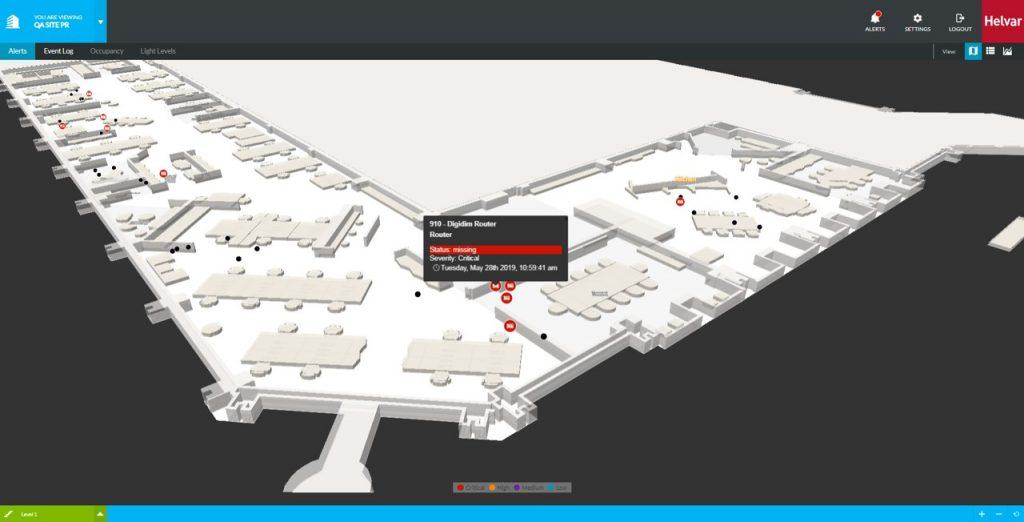 WRITTEN BY ILKKA MÄKELÄ
WRITTEN BY ILKKA MÄKELÄ
Ilkka is responsible for the commercialisation of digital services at Helvar,
helping customers create brighter spaces and wellbeing with intelligent
lighting control solutions. He has more than 15 years of experience in solution
and service sales in the B2B environment and holds an
M. Sc. Econ focusing on International Business.
Offices are evolving towards digitalisation and wellbeing
Recognising the diversity of work tasks and the individual needs of employees have made companies and work environments truly better in recent years, and it could be said that today’s workers are better off for it. With companies realising that investing in employee wellbeing can result in improved productivity levels, those companies that adopt these measures are increasingly seen to be at a competitive advantage when it comes to attracting and engaging the best employees in the market. Activity-based offices have become more commonplace and the concept itself is still developing. This development is increasingly based on using real measured data, such as occupancy data and indoor air quality values, meaning that decisions are based on facts.
It’s all about the people
The importance of end-user wellbeing and generally human-centric solutions in offices is growing. A concrete example of this is the WELL certification. WELL is the premier building standard to focus on enhancing people’s health and wellness through the buildings where we live, work and play. There are already more than 4,000 WELL-certified business premises in the world and with the importance of employee wellbeing rising, the number of companies achieving a WELL certification is expected to rise as companies seek to attract and retain the best talent.

WELL Certification
Becoming WELL certified is reliant on the number of points achieved with indoor air quality, lighting and office layout contributing to some of the points. Our Helvar HQ in Espoo is the first project to receive WELL Certification under WELL v2 in Finland and Scandinavia and the fifth in Europe. With Helvar being a lighting controls specialist, we installed our own solutions in the office which helped to secure some points towards the WELL certification. Smoothly controlled high lumen outputs offer an opportunity to, for instance support concentration, and give an energising boost of bright light during the dark winter months. The Helvar office renovation was designed to exceed the typical criteria and especially exceed lighting standard requirements to increase employee wellbeing through optimum lighting.
Efficiency, insight and personal services with digitalisation
The trend of wellbeing can also be enhanced through the continued growing trend of digitalisation and its exploitation. We’re moving from technology such as sensors, beacons, etc, to real services, i.e. focusing on what can be achieved with data. Through data and insights, spaces can be better optimised to benefit a company’s biggest asset — its people. Personal services such as indoor navigation and reservation services are gaining popularity, especially in large and shared premises, while at the same time, more services related to space optimisation, energy efficiency and property productivity are being investigated by owners and FM operators. These services need entities that can combine many different data sources together and bring customers a complete solution, especially with the reduced demand for monitoring many different applications or systems daily.
Investing in digital services starts with creating the right technology with a real understanding of the occupancy patterns and occupancy rate of a building and how people behave within it. It is then possible to decide what kind of services both the people and the building operator would benefit from. The technology can be, for example, a lighting control system that naturally covers the entire property and whose sensors are able to produce high-quality occupancy data in addition to their normal light control operation. Digital services can help companies to achieve operational efficiency, space optimisation and people-centred services.

Office environments in the “New Normal”
Given today’s situation it’s very valid to ask what will happen to offices as we know it. To what extent will people return to the physical workplace, and how will office designs be affected by the fear of future pandemics? In the short-term, many companies will likely instate new rules regarding proximity to others and limit the number of people in an office at any one time. The long-term effects remain to be seen.
The “New Normal” will be made easier with the right technology and digital services. For example, occupancy sensors and other smart office solutions will make it easier to ensure that there are not too many people in a space at the same time. This can happen by guiding people to work in less crowded areas, or simply notifying facilities management of where there is a cluster of people. Additionally, remote maintenance solutions will enable many facilities management tasks to be done without having to physically enter a building. So, although the future is uncertain, one thing is for sure; both digitalisation and people wellbeing will remain at the heart of office design.
